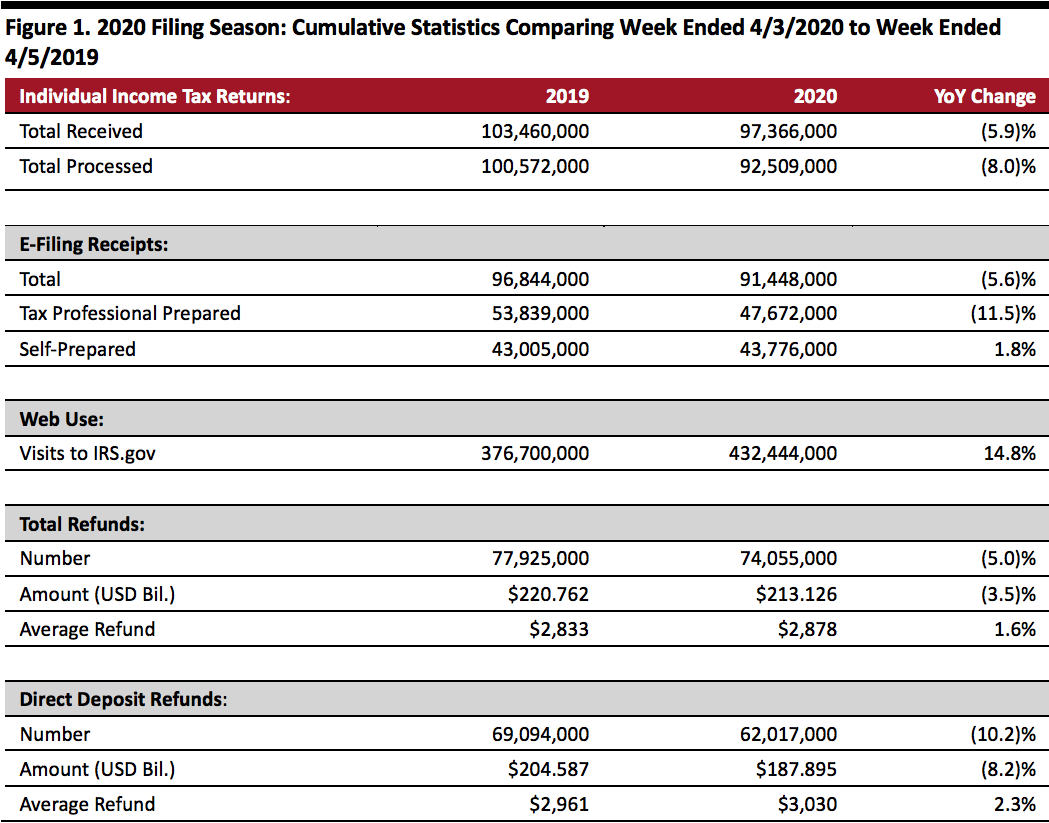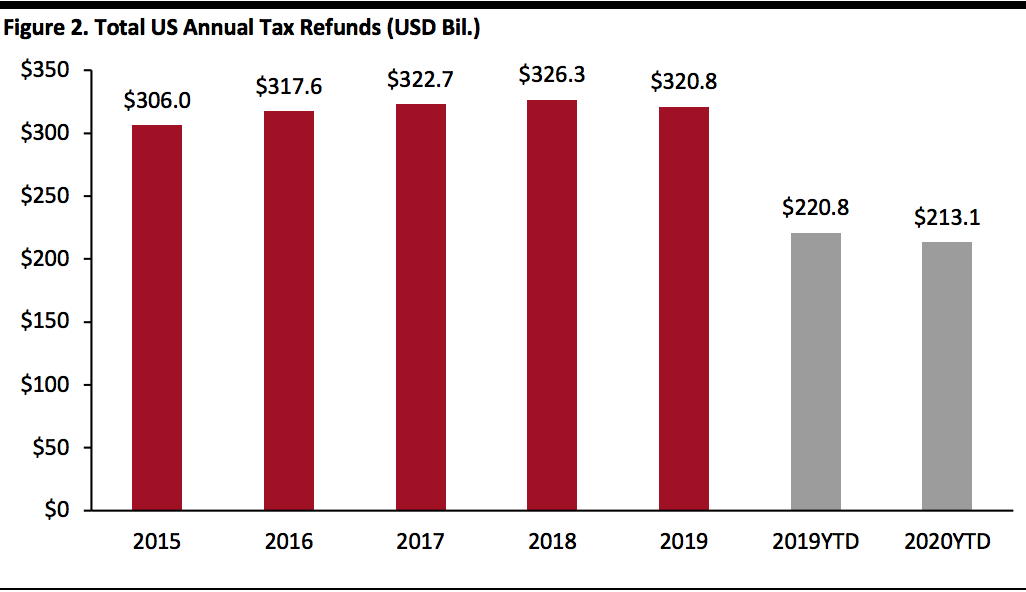Nitheesh NH
Each year, the IRS reports tax return filings and refunds on a weekly basis, starting at the end of January until the April 15 deadline. This year, in response to the ongoing coronavirus outbreak, the US Department of the Treasury (of which the IRS is a division) announced the deadline to file (and more importantly, to pay) has been extended to July 15.
In this report, we look at what happened in the 10th week of the 2020 tax filing season.
As of April 3, 2020:
 Source: IRS[/caption]
The graph below shows total refunds increasing at a 1.2% CAGR during 2015–2019.
[caption id="attachment_107756" align="aligncenter" width="700"]
Source: IRS[/caption]
The graph below shows total refunds increasing at a 1.2% CAGR during 2015–2019.
[caption id="attachment_107756" align="aligncenter" width="700"] Source: IRS[/caption]
Source: IRS[/caption]
- The IRS had received 97.4 million tax returns and processed 92.5 million. The number of returns processed was down 8% year over year. As mentioned in Tax Tracker, Week 7, tax filing numbers have dropped year over year and are likely to continue to do so in the coming weeks as taxpayers take advantage of a 90-day filing extension granted by the IRS in the wake of coronavirus crisis.
- Of the returns filed already, 93.9% were filed electronically. Of those, 52.1% were prepared by tax professionals, and the remaining 47.9% were self-prepared.
- With IRS temporarily closing down all Taxpayer Assistance Centers and suspending all in-person customer service nationwide, a high number of taxpayers used the IRS website for information: The site logged about 432.4 million visits, up 14.8% year over year.
- A total of 74.1 million refunds had been issued as of April 3, totaling $213.13 billion and averaging $2,878 each. The number of refunds issued was down 5%, and the total amount refunded was down 3.5% year over year. However, the average refund grew by 1.6% year over year.
- Of those refunds issued, 83.7% were paid using direct deposit. The average direct deposit refund was $3,030, up 2.3% year over year.
 Source: IRS[/caption]
The graph below shows total refunds increasing at a 1.2% CAGR during 2015–2019.
[caption id="attachment_107756" align="aligncenter" width="700"]
Source: IRS[/caption]
The graph below shows total refunds increasing at a 1.2% CAGR during 2015–2019.
[caption id="attachment_107756" align="aligncenter" width="700"] Source: IRS[/caption]
Source: IRS[/caption]